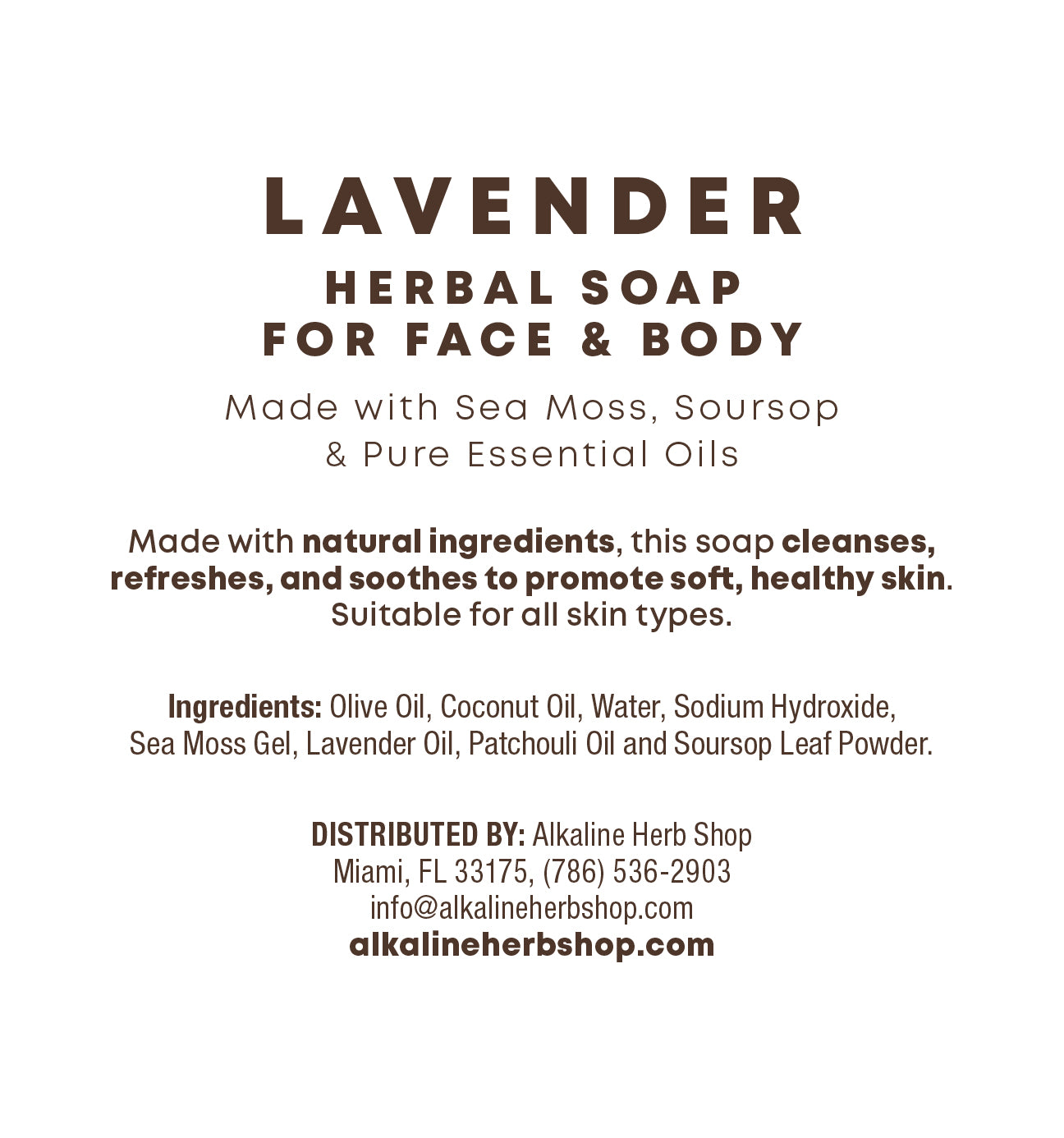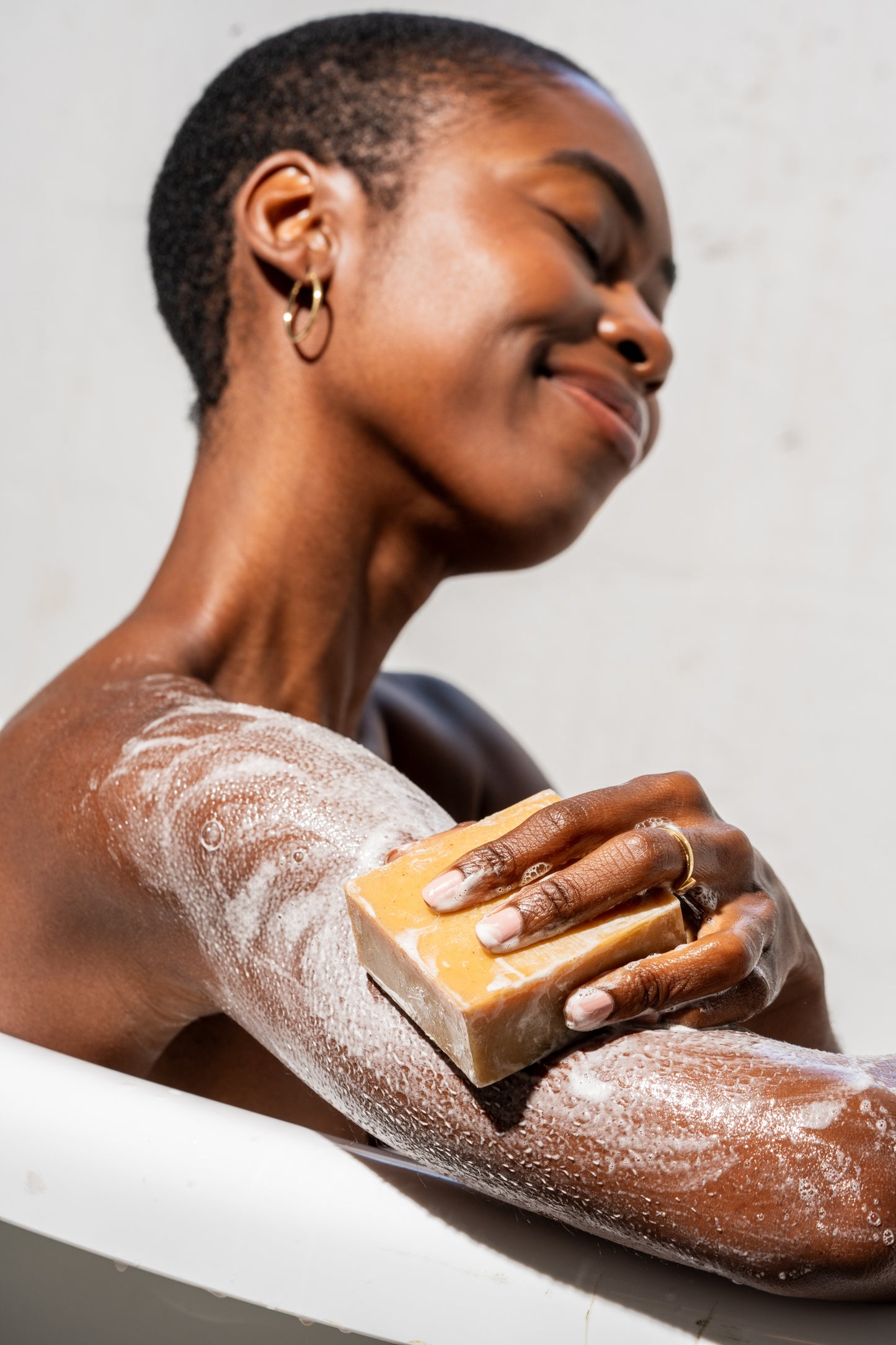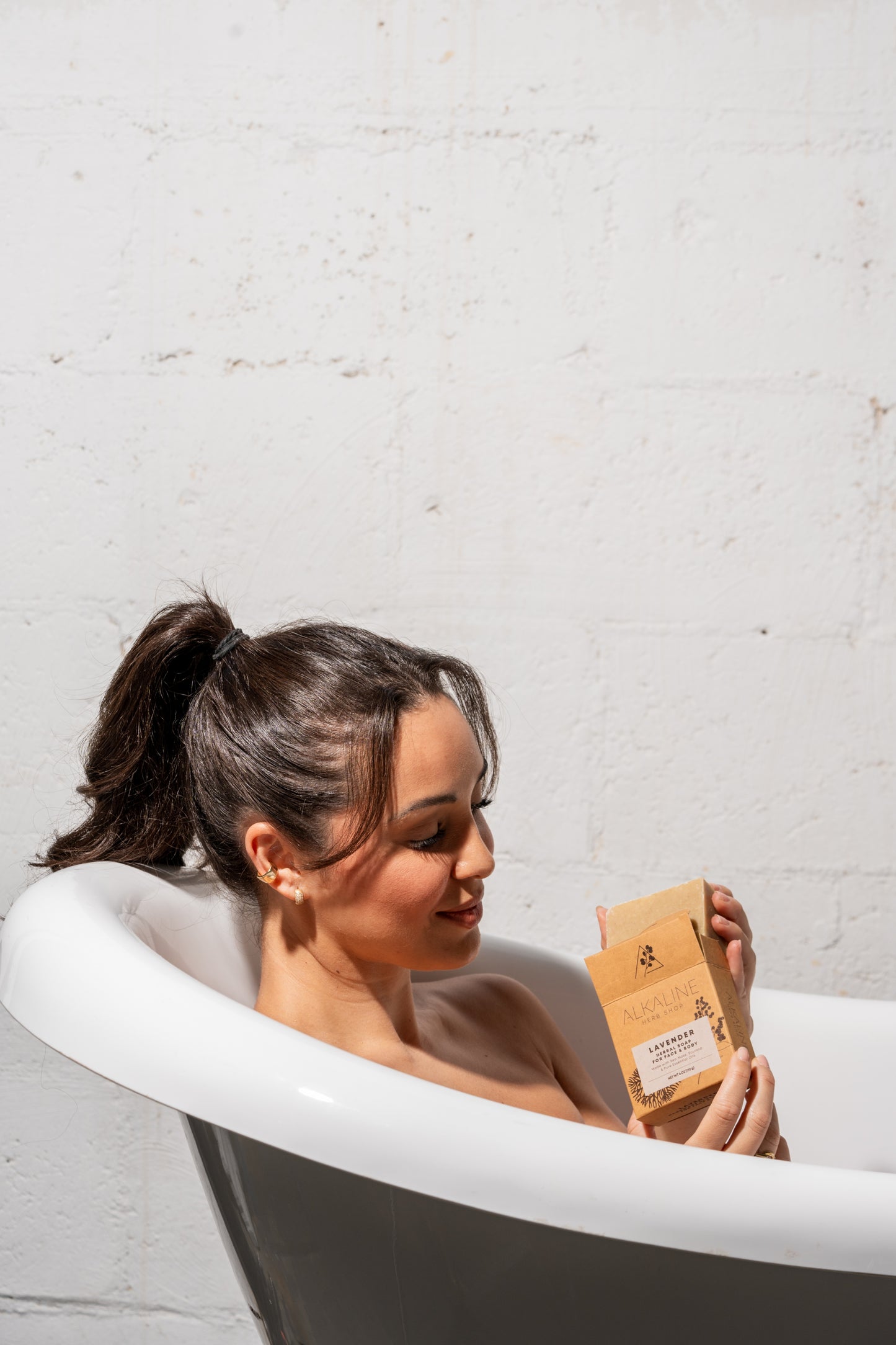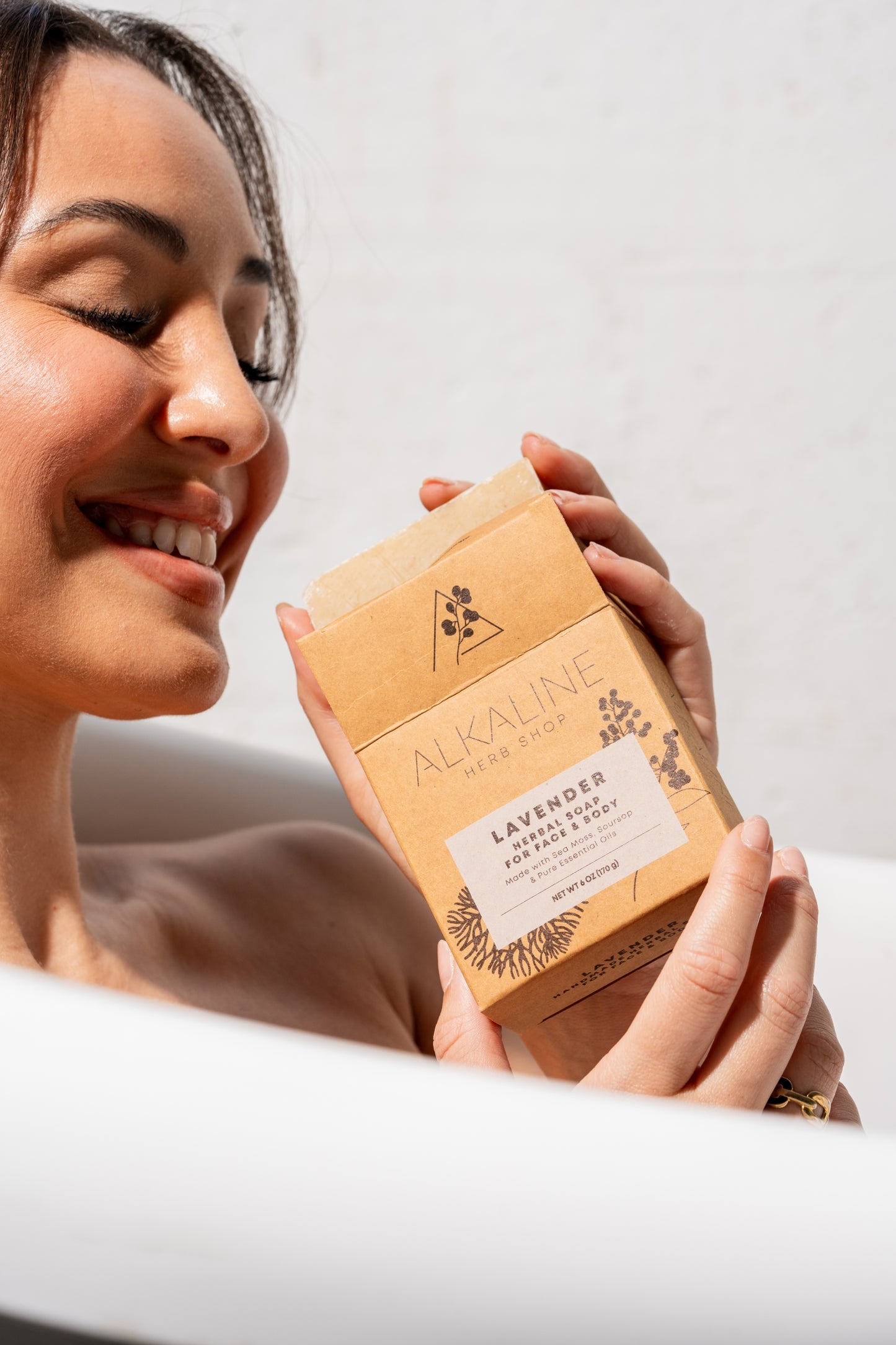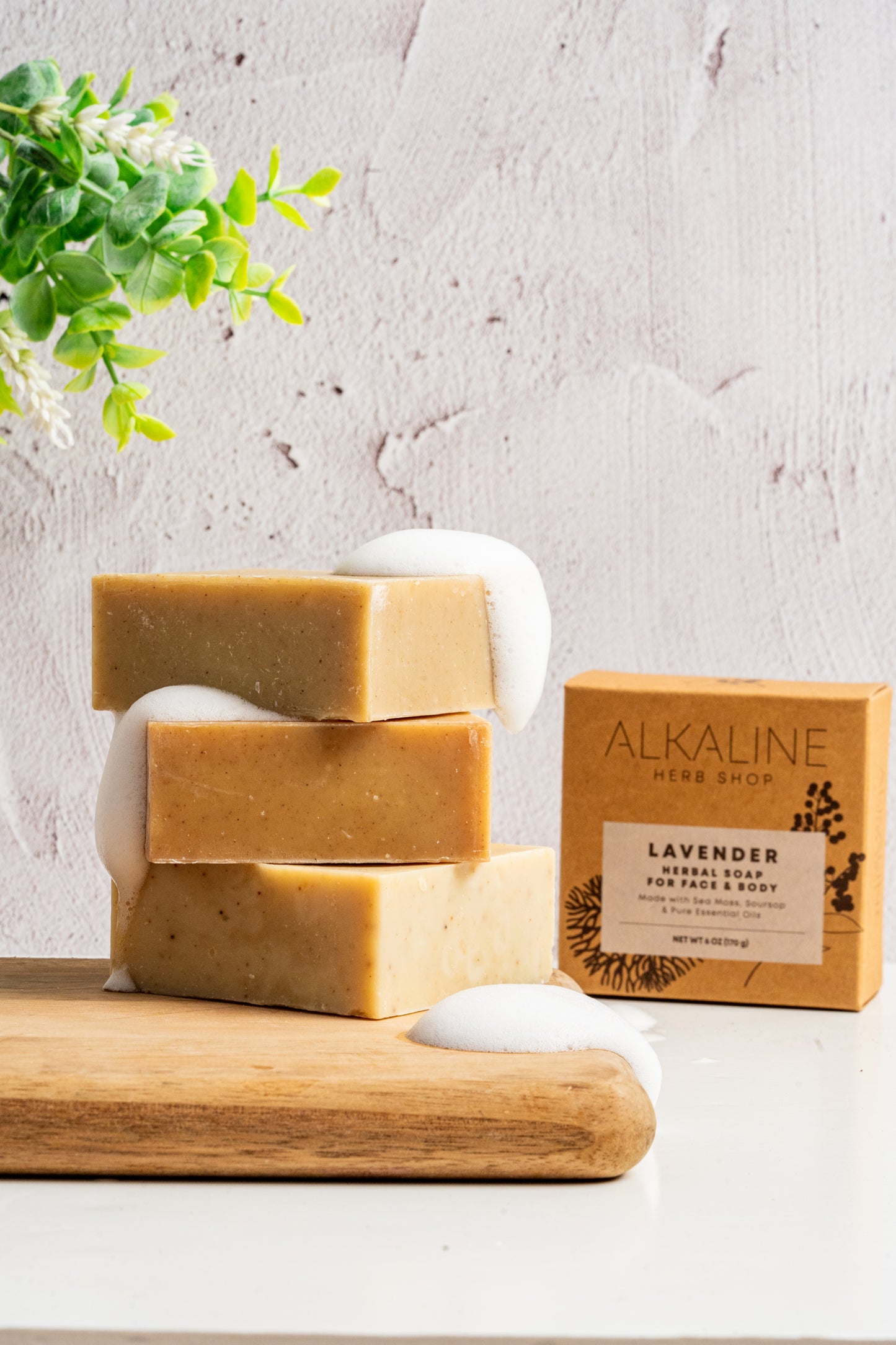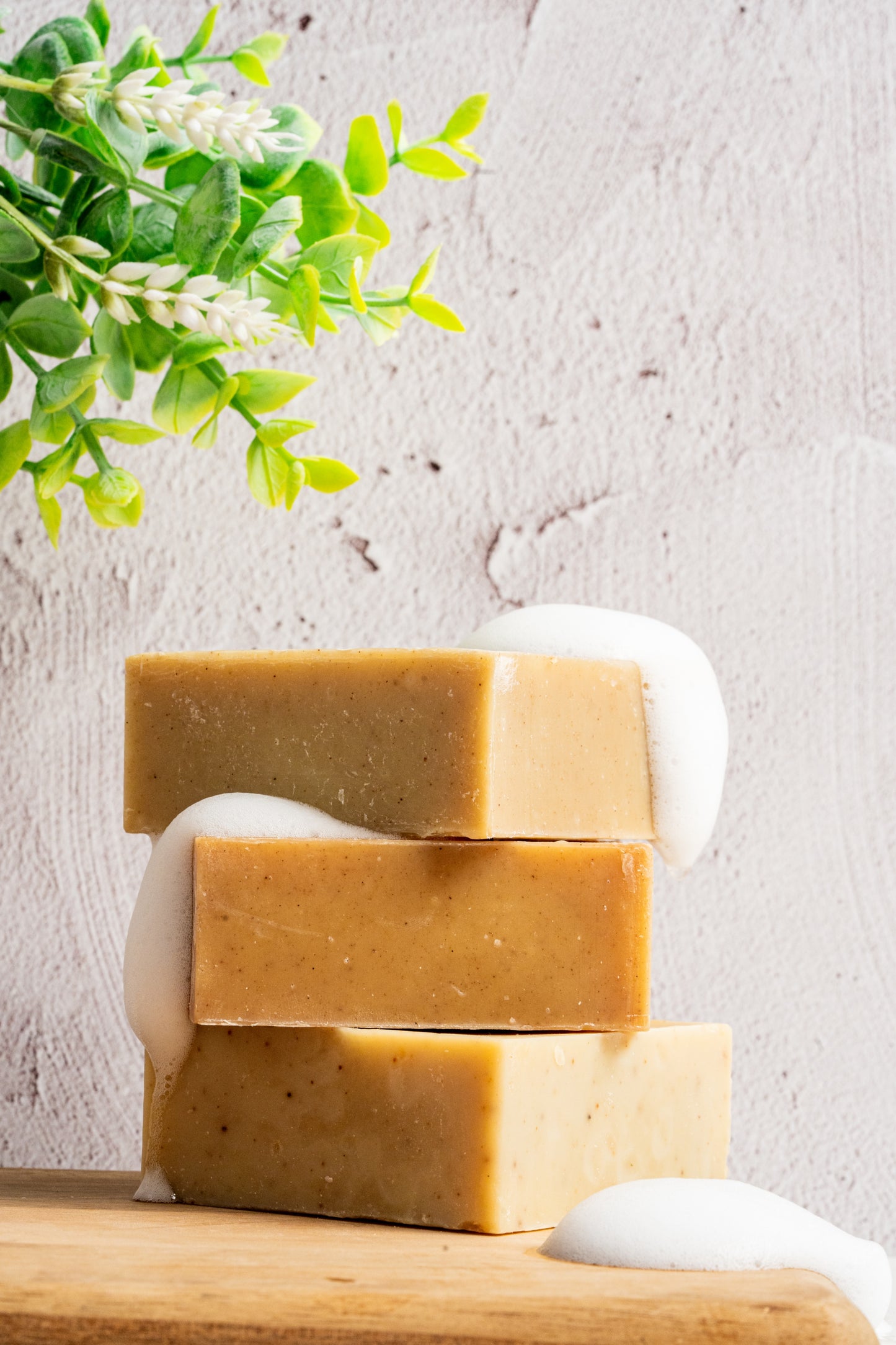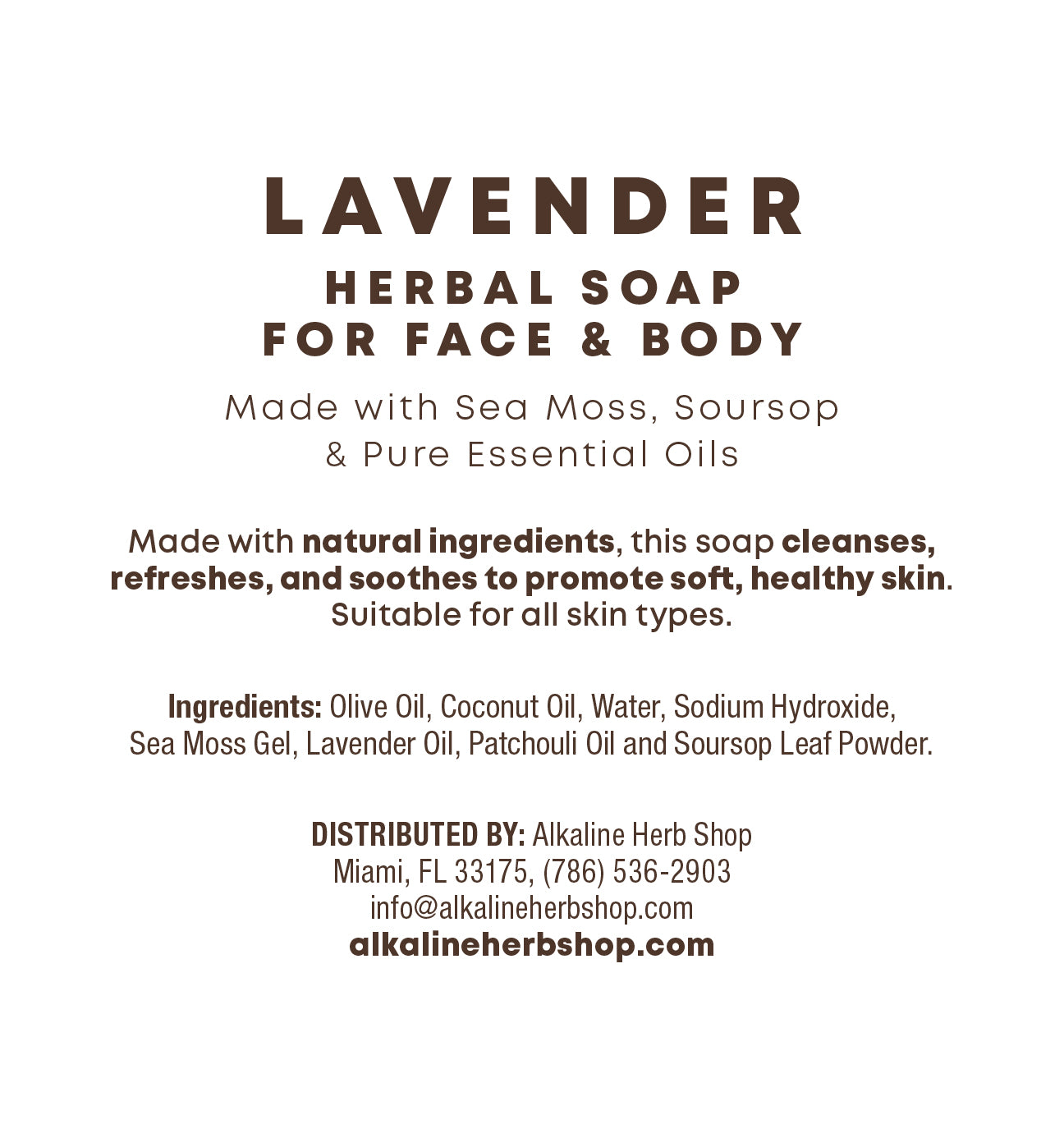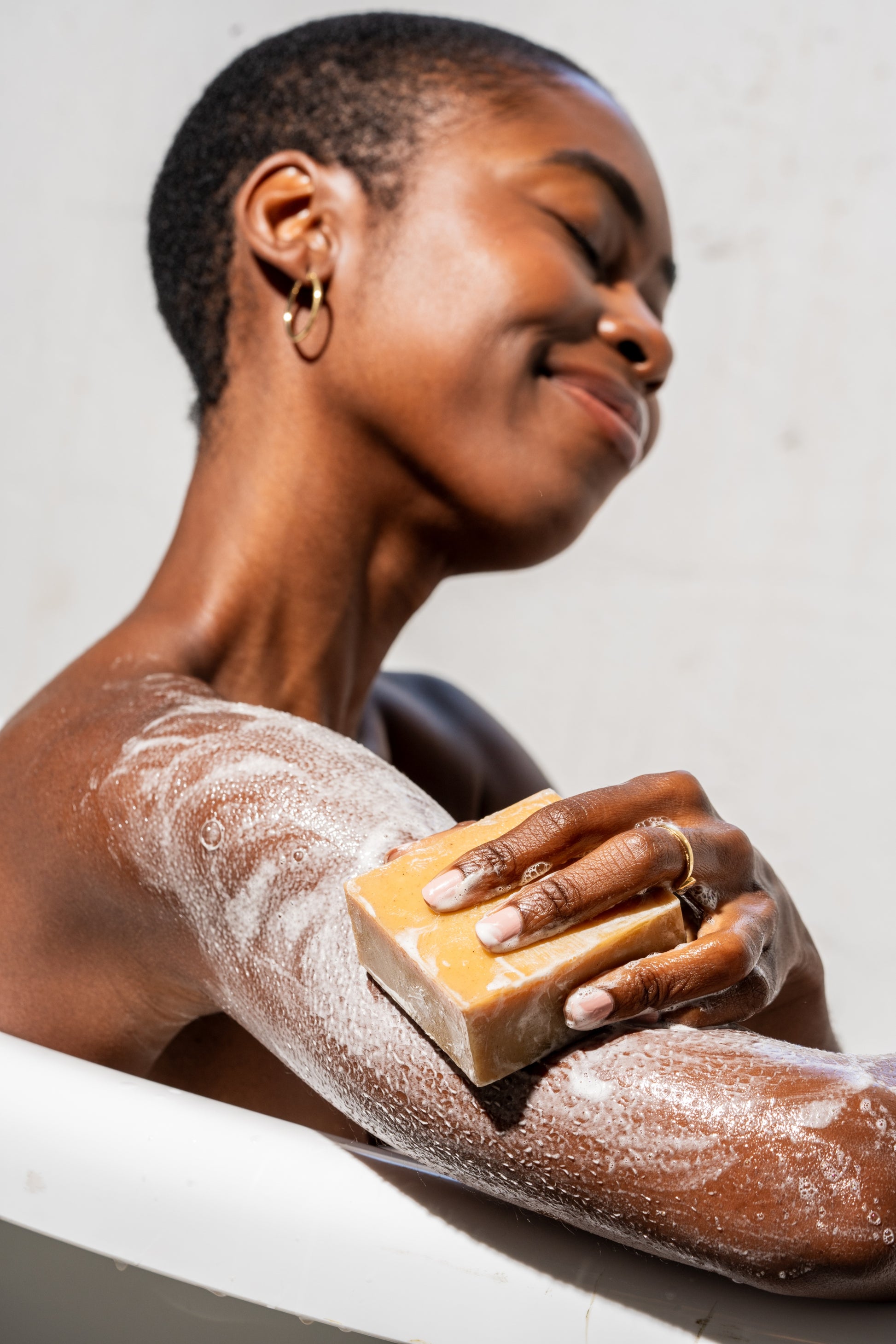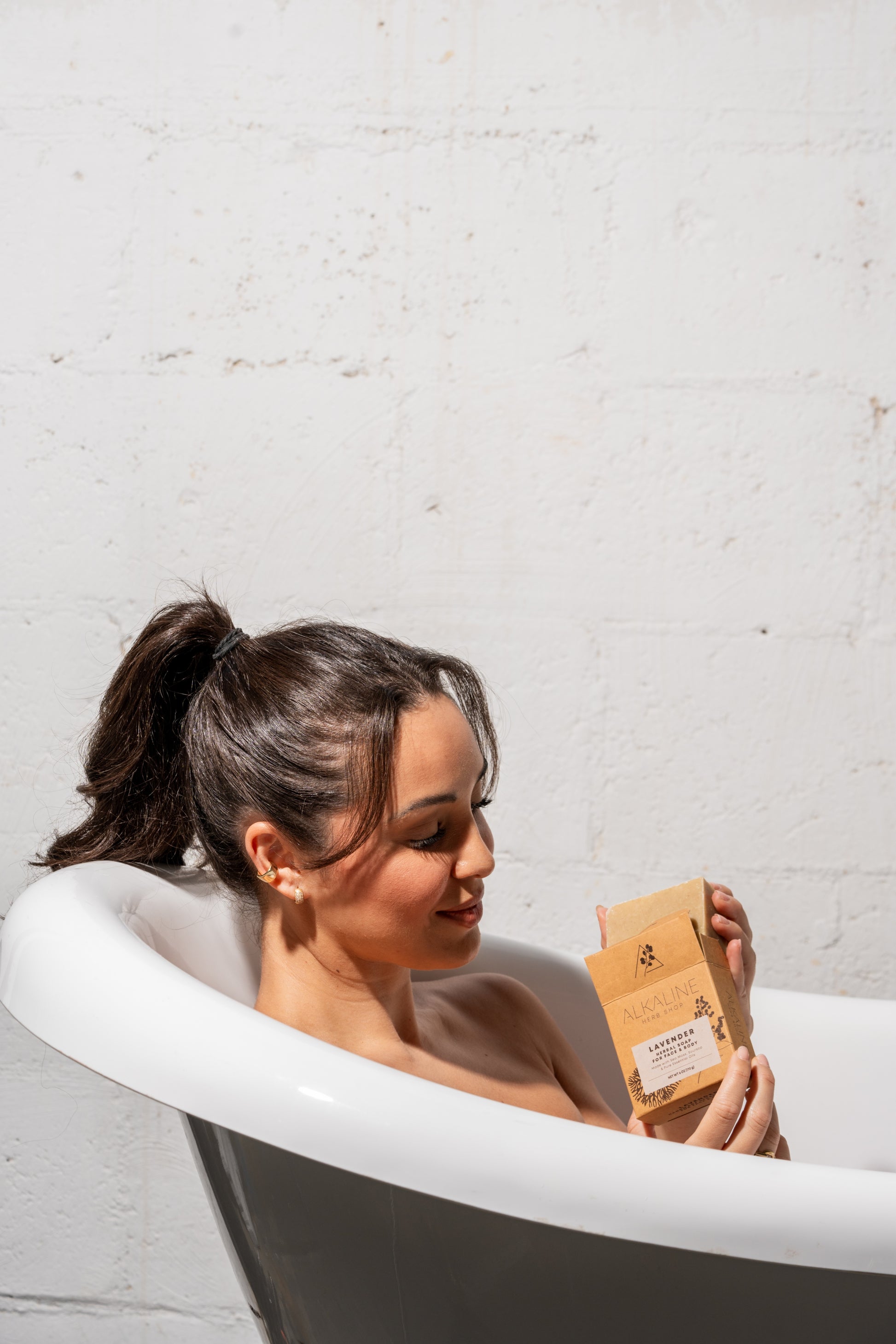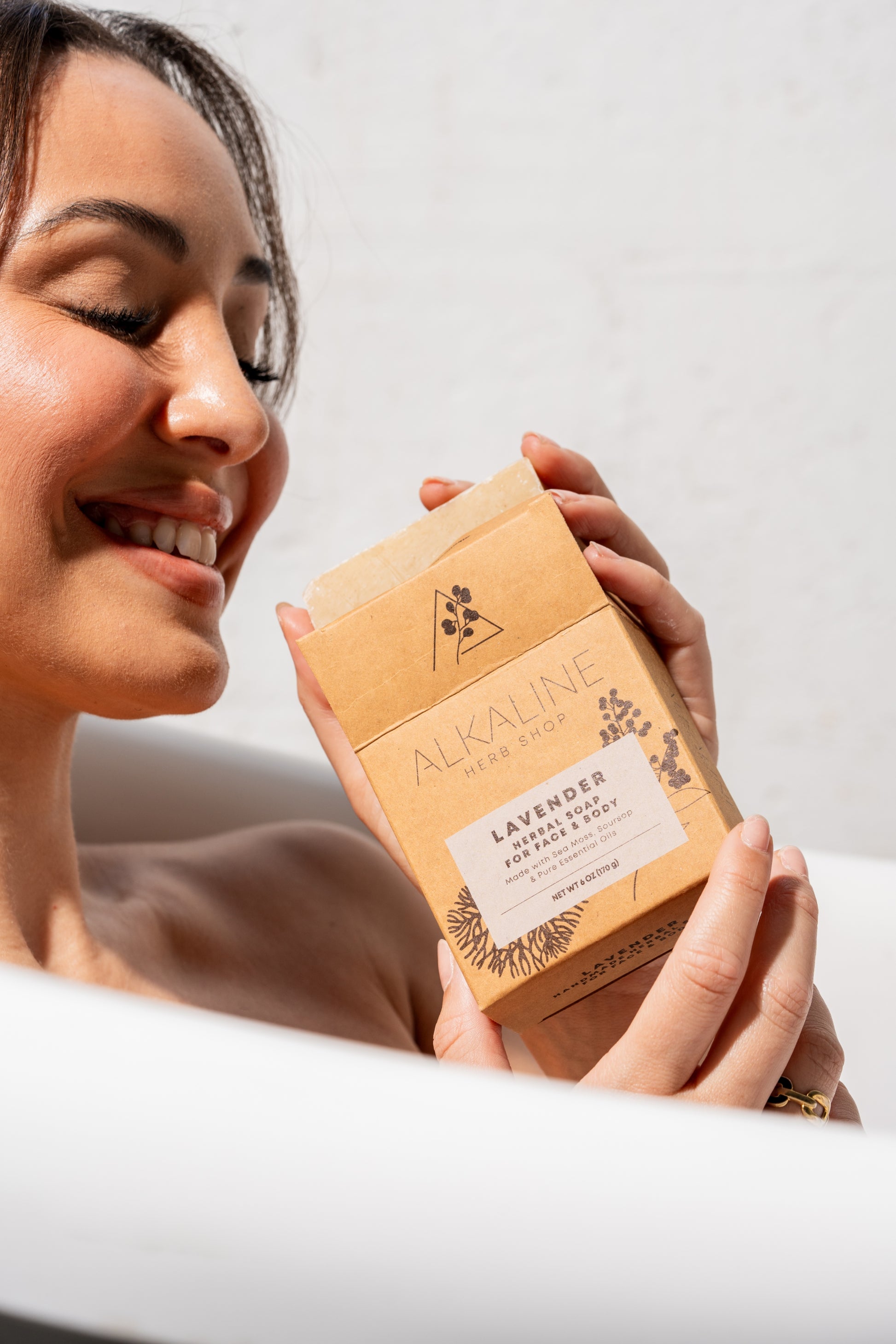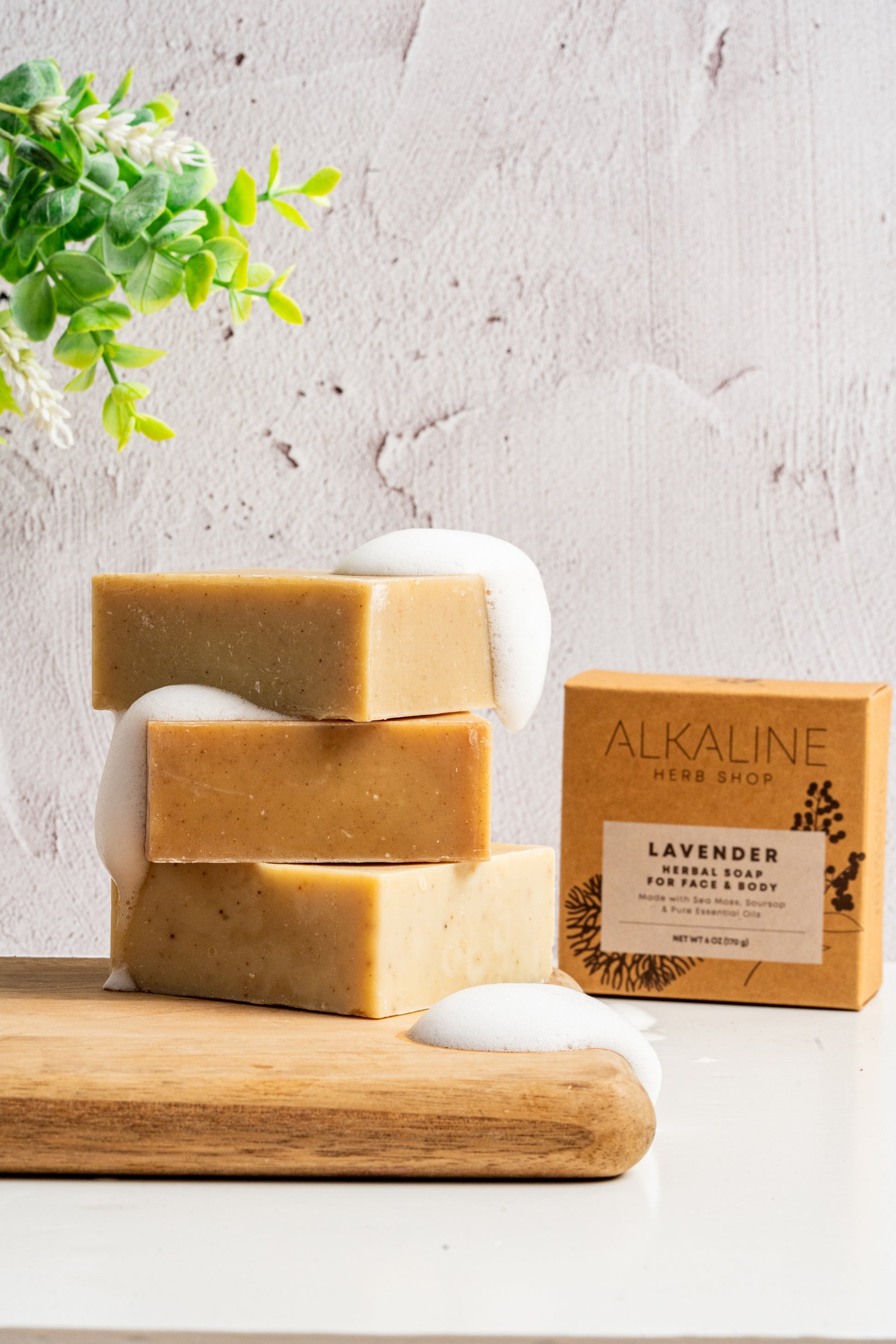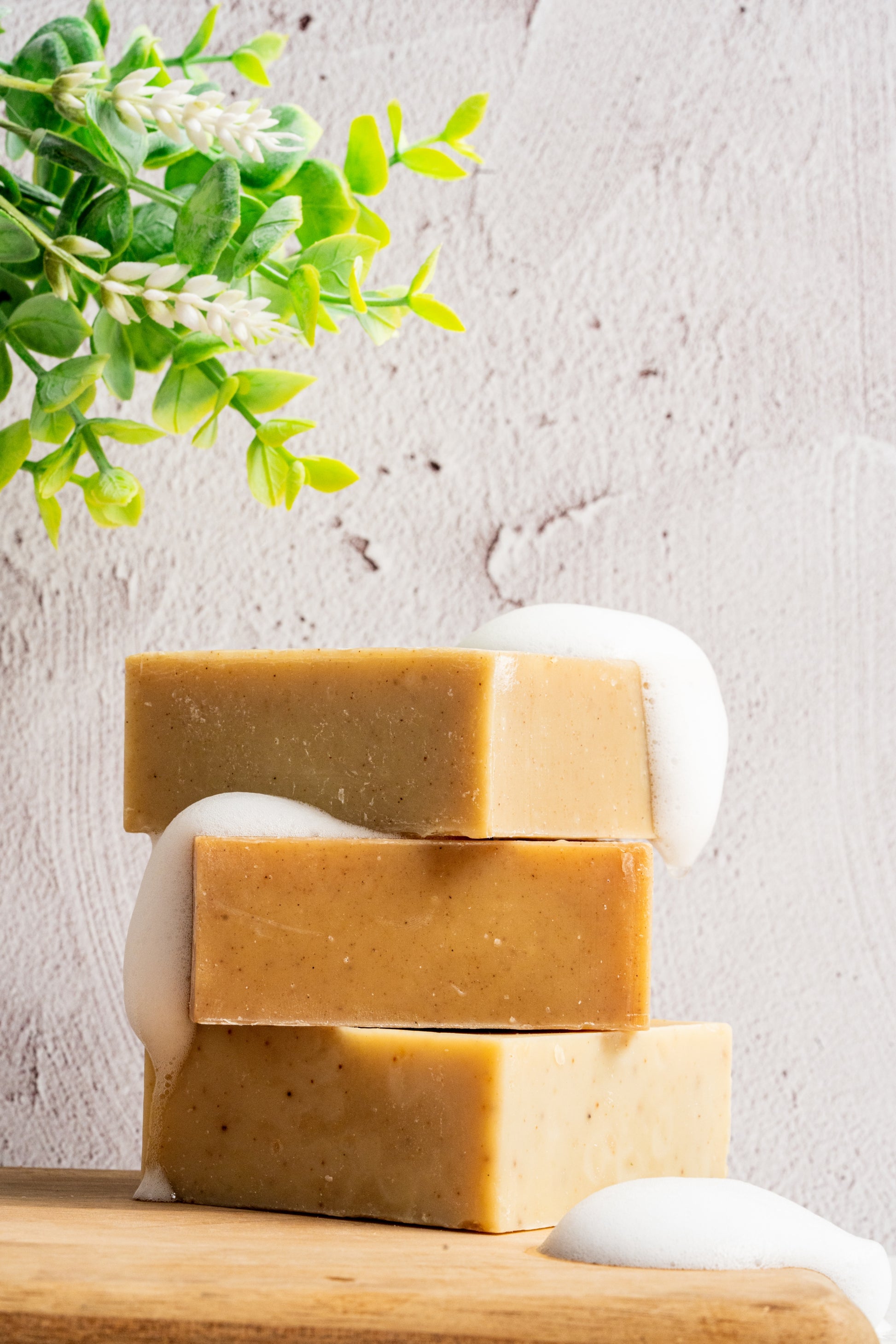Sea Moss, Soursop, & Lavender Soap
Sea Moss, Soursop, & Lavender Soap

Made with natural ingredients, this soap cleanses, refreshes, and soothes, promoting soft, healthy skin. Suitable for all skin types.
Couldn't load pickup availability
At the Alkaline Herb Shop, we know our customers come to us on unique wellness journeys looking for clean, affordable products to add to their arsenal of health and healing. Our team wants to honor these personal journeys by elevating the quality of everything we have to offer, from our wildcraft herbs and herbal blends to our beauty care products, including handmade soaps.
Our team is also committed to staying fully transparent about the ingredients we source and use. So, even though the U.S. Food and Drug Administration (FDA) does not require labeling for soap bars, we've made the decision to include the full list of ingredients used to make our moisturizing soaps.
You'll notice that the compound sodium hydroxide is listed on our soap ingredients list. This is because sodium hydroxide (also called lye or caustic soda) is used by our artisans during the soap making process. However, there is no sodium hydroxide in our final products.
If sodium hydroxide is not in the final product, why is it on the label for Alkaline Herb Shop soaps?
Soapmaking is a centuries-old art, and sodium hydroxide, an alkali, is an integral part of this technique. We include sodium hydroxide on our label because we use it during the handcrafting process, even though none of it makes it into our final products.
Did you know? Most liquid and solid body cleansers available today aren't even actually soap—they are synthetic detergents. Genuine soaps offer an unparalleled cleansing and nourishing experience for your skin.
All true soaps are made with lye. Historically, people made soap using things like animal fats and lye extracted from wood ash. Today, soapmakers have the ability to create cruelty-free soaps by using sodium hydroxide, which is made by combining pure water, pure salt, and electricity.
To make soap, the artisan mixes fats or oils with sodium hydroxide, then allows the mixture to cure over the course of a few weeks. The sodium hydroxide reacts with the oils, transforming the soap from liquid into solid form. Sodium hydroxide is eliminated during the curing process, leaving you nothing but a clean, cleansing, genuine soap product.
What is sodium hydroxide?
Sodium hydroxide, or lye, is an odorless chemical that looks like solid white crystals at room temperature. It is used in a wide variety of manufacturing processes, including soapmaking. The compound is also highly corrosive and can cause skin and eye irritation.
Traditional soapmakers who rely on sodium hydroxide to create their products have learned how to handle sodium hydroxide with the utmost care and respect—not only to keep themselves safe, but to make sure their finished soaps remain as pure and high quality as possible.
INGREDIENTS:
- Olive Oil
- Coconut Oil
- Water
- Sodium Hydroxide
- Sea Moss Gel
- Lavender Oil
- Patchouli Oil
- Soursop Leaf Powder
DIRECTIONS:
- Wet your skin.
- Lather: Rub the bar of soap between your hands or directly onto a washcloth or loofah to create a lather.
- Apply: Apply the lather to your skin, starting at your neck and shoulders and working your way down.
- Rinse: Rinse your body thoroughly to remove any remaining soap.
- Processing Time: Orders ship within 1 to 2 business days.
- Refunds: 100% satisfaction guarantee. Contact within 30 days of receipt, return unused portions at your expense, and receive a full refund upon receipt.
- Customs Duty Tax: Pre-paid and covered for most countries.

